On water, but without water. How half a million people in Mykolaiv live without the regular water supply and try to restore it
Since the middle of April, the second most populous regional center in southern Ukraine has been living without a centralized supply of drinking water, while the tap water is only suitable for toilets. The reason for this is a water pipeline that was cut off by the Russians, which stretches for more than 70 km from the Dnipro, and which had been supplying Mykolaiv with drinking water for more than 40 years. As long as the majority of the water line is in the occupied territory, it is impossible to repair it. TEXTY researched whether it was possible to establish an alternative water supply in three months and how the situation may be solved in the long-term perspective.
Translated by Dmitry Lytov, Mike Lytov
Since the middle of April, the second most populous regional center in southern Ukraine has been living without a centralized supply of drinking water, while the tap water is only suitable for toilets. The reason for this is a water pipeline that was cut off by the Russians, which stretches for more than 70 km from the Dnipro, and which had been supplying Mykolaiv with drinking water for more than 40 years. As long as the majority of the water line is in the occupied territory, it is impossible to repair it. TEXTY researched whether it was possible to establish an alternative water supply in three months and how the situation may be solved in the long-term perspective.
Broken water pipes
On April 12, some areas of Mykolaiv lost water. Even then, local residents suggested that it might be related to hostilities. "Our mayor warned that the water supply could disappear. We were told that the Kherson region, through which the water supply runs, is occupied and a war zone. Many townspeople – such as myself and all my acquaintances - had a supply of water. So while the authorities organized the delivery of drinking water in the city, people used their supplies," local resident Larisa tells TEXTY. "They listened to me and said: 'Obviously, Sienkievych is a pessimist, he's telling tales, everything will be fine.' And today, we have what we have," said the mayor Oleksandr Sienkievych on one of the streams.
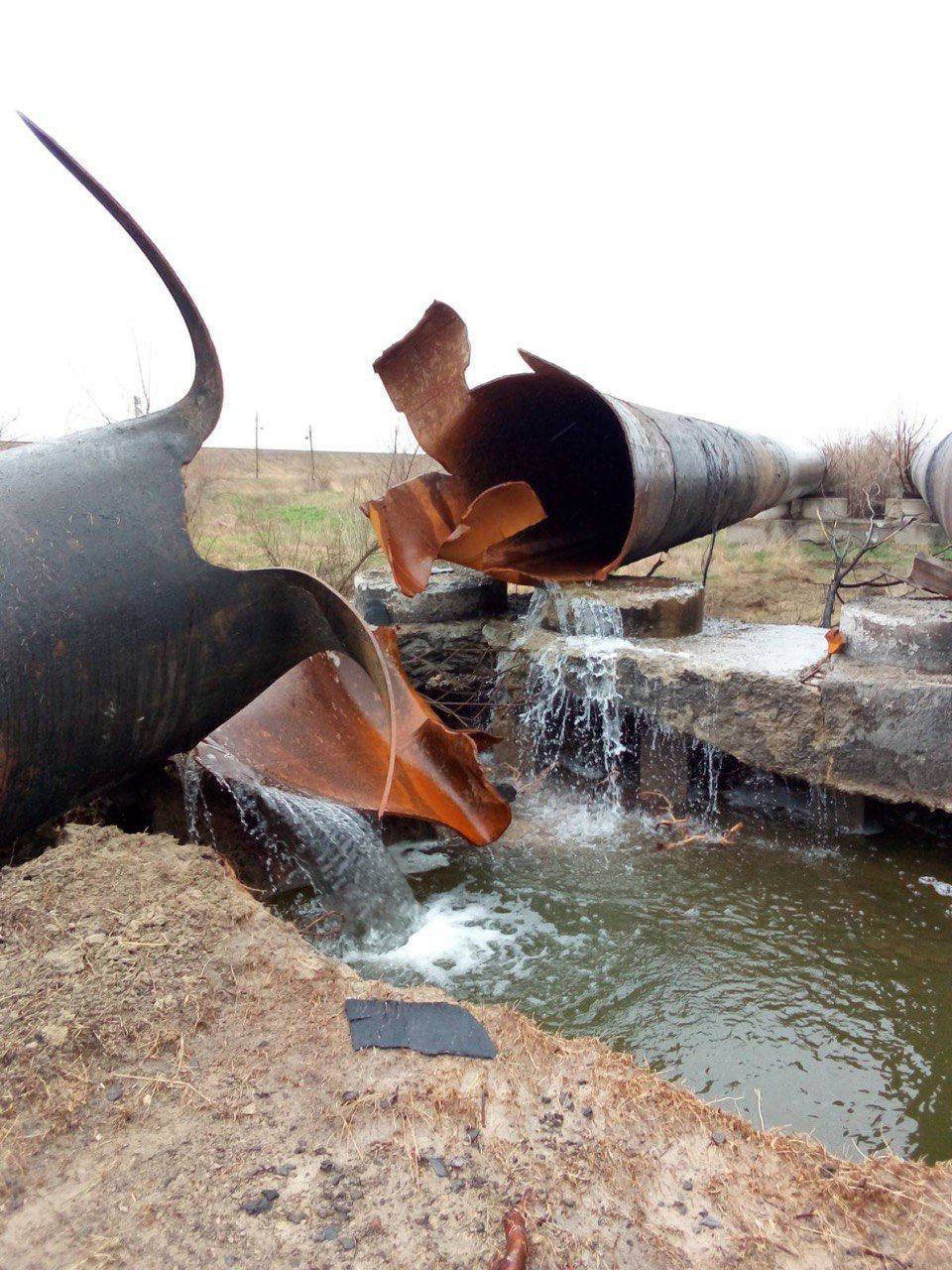
At first, "Mykolaivvodokanal" (Mykolaiv City Water Utility) explained the interruptions by the need to switch the pumps providing water to the city to backup power supply lines. The pumps were switched, but as of April 13, water was not running. The same evening, the mayor announced that at least one more day would be needed to eliminate the problems, or the 15th at the latest. However, it soon became clear that the problem was more serious. During the inspection of the pipeline, damage was discovered as a result of the missile hitting the territory, which is in an active war zone.
After the water supply disappeared, the water utility, businesses and volunteers began delivering water by truck to residential areas. Hospitals and some other communal institutions were connected to their own wells even earlier. However, for some time many residents were forced to collect rainwater, or, for technical needs, directly from the river.
"According to the schedule, large trucks carrying 16 cubic meters of water arrived at certain points in the city. And there, the citizens, standing in line, could collect water for free. Some municipal institutions, such as hospitals and kindergartens, had their own wells, so they were constantly supplied with water. And all citizens could collect water from these wells," explains Dmytro Davydenko, coordinator of the "DoF" volunteer center (from the name "House of Officers and Fleet" - ed.).
Suspilne TV’s plot about water purification in Mykolaiv
The elderly and people with limited mobility were helped by volunteers - they delivered buckets of water to their doorsteps. Such projects continue to this day - for example, for families with small children.
The people of Mykolaiv learned about when and where the water trucks would arrive from the official information channels of the local authorities on Facebook and Telegram. Statements about places and times of water distribution were published in local online media, on public pages of local government representatives, and in local communities on social networks. At the same time, they began unblocking old wells and drilling new ones. Some of them were also taken care of by charitable organizations, businesses and volunteers. Although there are more machines and wells appearing every week, they are still not enough for a large city, and many people have to travel several blocks to get drinking water.
After some time, water appeared in the taps. Water intake was organized from the Southern Bug and from wells (see below for more details on how this is happening).
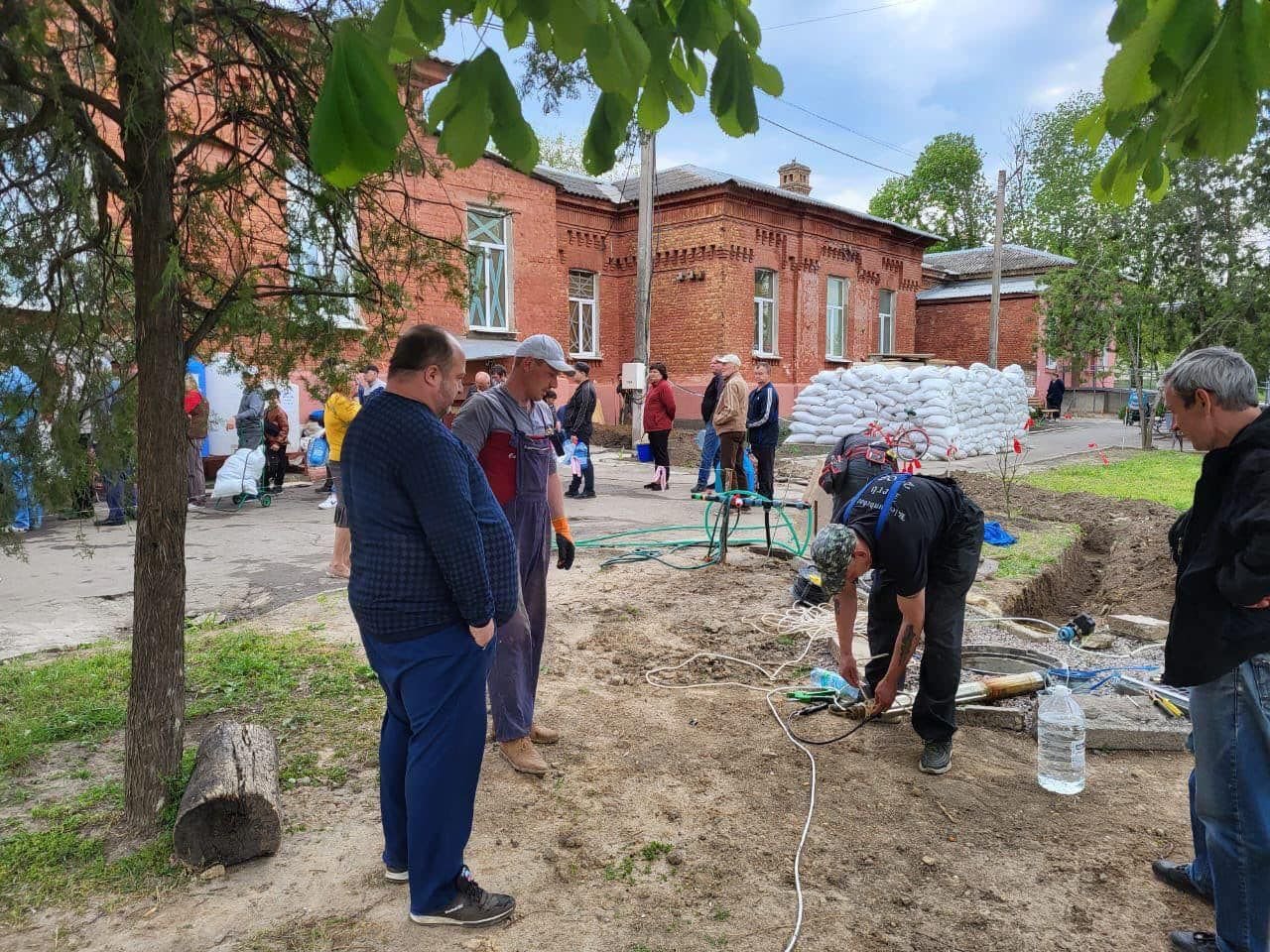
"It is quite uncomfortable for me to shower with this water; instead, I heat up some water that I collect from barrels. I only use tap water to flush the toilet and wash clothes. Although the water is very salty, it is a normal color in our house. Probably because we changed our water pipes to plastic ones. Our neighbors with iron pipes have yellowish water, because the salt water "eats" them and carries rust. Therefore, this water cannot be used in the washing machine and boiler - it damages the equipment. Therefore, I wash my clothes by hand in this water. And then additionally, I rinse things like underwear and bedclothes with purified water," says Larisa.
"Now I use three types of water. The first is bottled water from supermarkets, which, by the way, has always been on sale. Our family uses it for drinking and cooking. The second type is clean water from points where you can collect it. We use it to rinse food and wash something - in short, we use it for everything for which we don't want to use salt water. And water directly from the tap, we use for showering and washing," says Andriy, a local resident.
A long way of water to the city
Until the acute phase of the war, Mykolaiv consumed water from the Dnipro for more than 40 years. Physically, the water intake point is located in the Kherson region, 10 km upstream of the Dnipro from Kherson, near the village of Mykilske. From there, two strands of pipes with a diameter of almost 1.5 m each stretch along a broken route for more than 70 km. The water goes to the sewage treatment plant in the village of Halytsynove. At the same time, the difference in elevation on the way is up to 80 m. Today, 80% of the route passes through the territory of the occupied Kherson region.
The intake site is of strategic importance - it is located downstream from the Kakhovsky Reservoir. The latter plays the role of a "sink" for water that came from Kyiv, Cherkasy, Dnipro and other cities upstream. In addition, this point is higher than the mouth of Ingulets, an industrially polluted river that carries its waters from Kryvbas. As a result, according to local officials, residents of Mykolaiv received better water than residents of other cities on the Dnieper upstream from Kherson. And after treatment, residents of Mykolaiv could simply drink water from the tap.
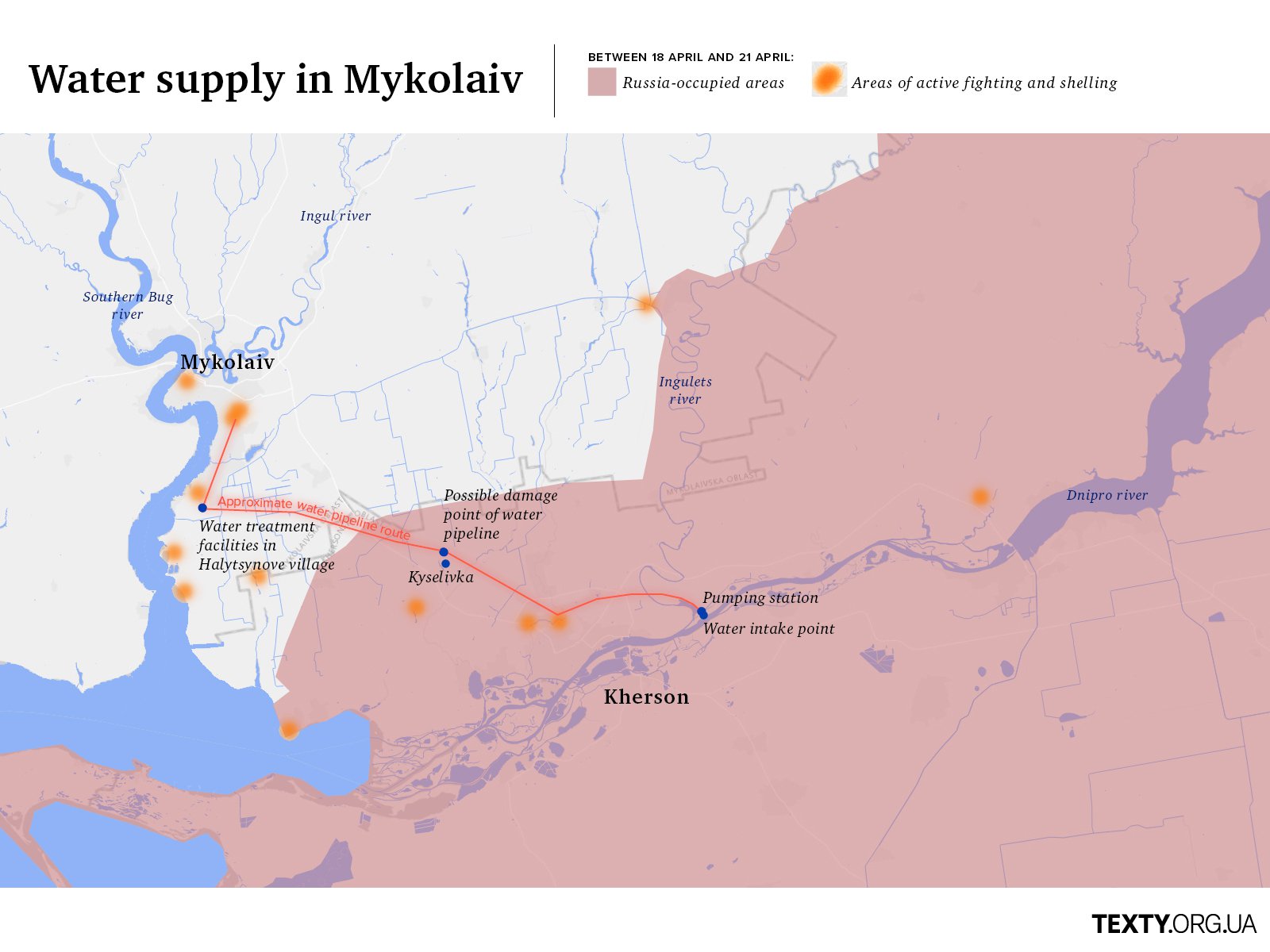
Why couldn't Mykolaiv take water from nearby reservoirs, which the city is surrounded by on three sides? The reason is the high level of pollution, which the existing city treatment facilities simply cannot cope with. The regional center is located at the mouths of two rivers - the Ingul and the Southern Bug. In both rivers, the water has an increased content of salts and heavy metals. Moreover, from the Dnipro-Buzka estuary, where the Southern Bug and the Dnipro flow into the Black Sea, windy weather can mix salt water with the fresh water that the Bug carries into the sea, scientists say. And this significantly complicates the cleaning process.
Some areas of the city, where the main water supply network did not reach, received technical water from wells (due to the peculiarities of the soil, it is also not possible to use it for food, drinking water is delivered to these areas). There were several such areas on the territory of the city, conserved since the end of the 1980s.
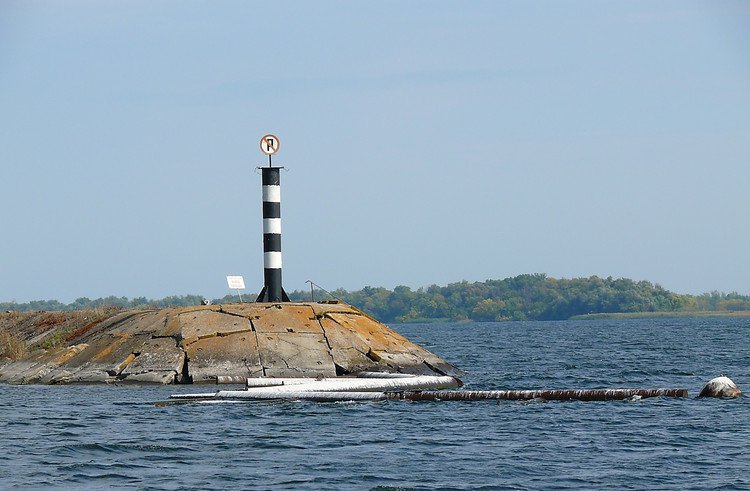
There have been problems with the water supply from the Kherson region before. First of all, they talked about the wear and tear of both the pipes themselves and the pumping systems that pump water over a long distance. The first line was laid in 1976. The pipes are made of steel, and they served their purpose more than 20 years ago. Additionally, part of the pipeline lies in groundwater, accelerating rusting. In recent years, local mass media have mentioned a big pipe burst in May 2018. There are also periodic incidents with the water pipeline infrastructure: using the length of the pipe, criminals regularly stole concrete slabs that made up the "inspector's road" - a route for special equipment along the entire length of the system from the Kherson region to Mykolaiv.
How water is mixed in pipes
In order to restore at least technical water to the taps of the people of Mykolaiv, it was decided to urgently fill the system with water from the Southern Bug, and then gradually replace it with water from wells - they deconserved part of the Soviet ones and started drilling new ones. "It was critically important to supply at least some water to the system. In addition to sanitary reasons (so that people do not go to the toilet outside), it was also necessary to provide a fire extinguishing system, which is one of the priority tasks in a city that is constantly under fire." - Dmytro Novytskyi, president of the "Ukrvodokanalekologia" Association, explains to TEXTS.
It was impossible to pump only drinking water from wells into the system immediately. After the pipe in the Kherson region was broken, the system was completely dehydrated, and to fill it, 150,000 cubic meters of water had to be pumped in. Instead, wells yield no more than 5-10, with a maximum of 20,000 cubic meters per day. In normal mode, the city consumed about 80,000 cubic meters daily. That is, without water from the Bug, the system would not be filled for a long time. However, even when chlorinated, this water is not suitable for drinking and cooking.
Distribution of water from cars in the first weeks after the accident. Photo: Dumskaya
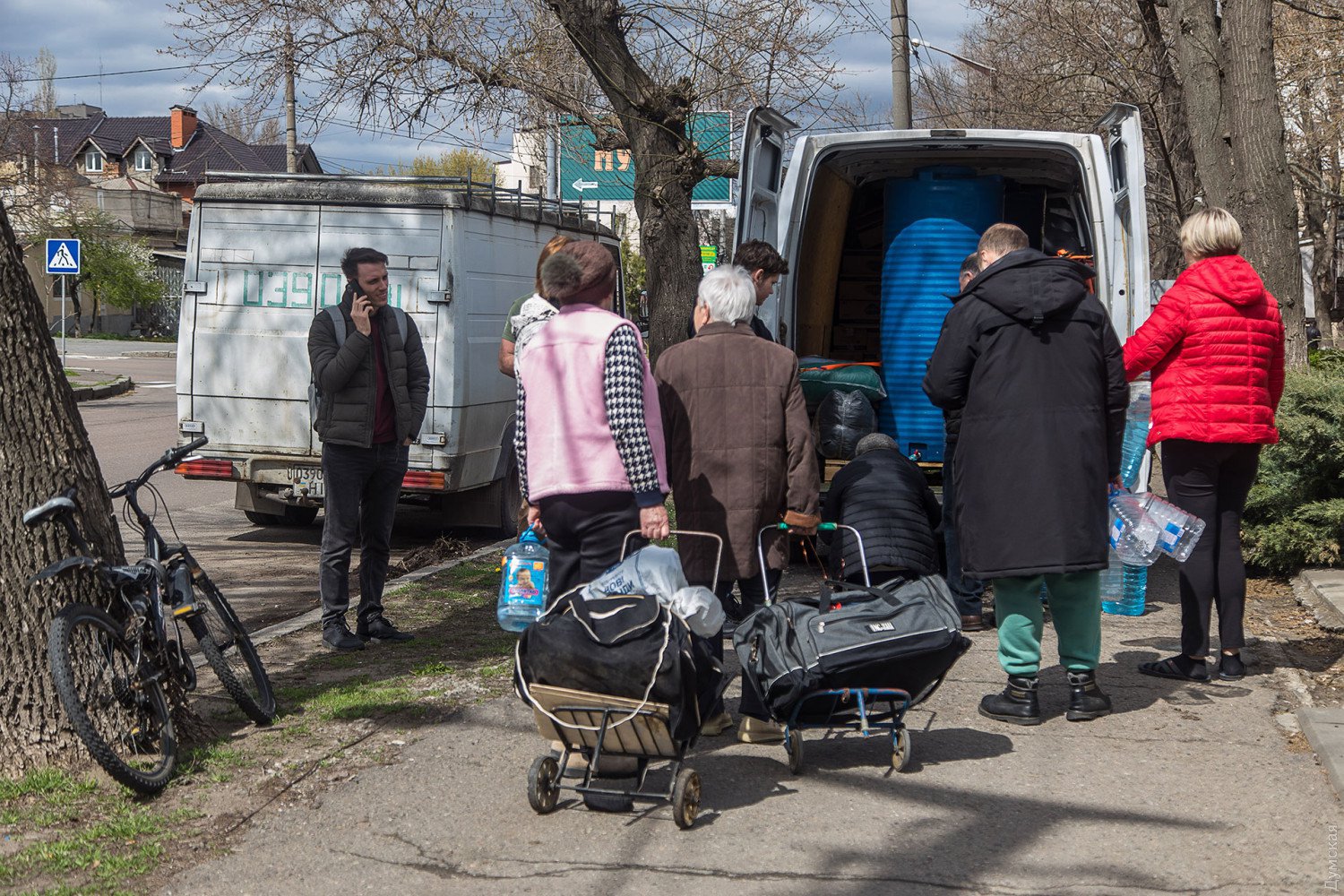
On May 3, the Cabinet of Ministers allocated UAH 56 million for the restoration of the water supply in Mykolaiv. The money was used for the drilling of new wells and the organization of pumping water from the Southern Bug into the system. This technical water appeared in the taps of some residents on May 9, and on May 16, the water supply was restored on schedule throughout the city. At the same time, Sienkovych said that there will be no drinking water in the waterworks "for at least another two months." "Currently, we are preparing a presentation of four separate water intakes with separate water purification systems that will provide potable water," he added.
"Usually, such projects take a year or a half to implement, but now that many processes are simplified, it can be designed in 3-4 months. It should be a whole plant that will provide cleaning, pressure and the necessary volumes. It will be a completely new system that should remove the issue of dependence on pipes from Kherson. However, from the point of view of safety, it is best for the two systems to function in parallel," says Novytskyi.
Cleaning is complicated by the fact that the lilac water is much harder and saltier than the Dnieper water. The laboratory of the water utility says that the "new" water pumped into the water supply from Bug contains a lot of sulfates and chlorides. "The hardness of this water is estimated at 22-23 millimoles per cubic decimeter, and in the Dnipro water this indicator was much lower - 3.5-4 millimoles. The chloride content in the Dnipro water was up to 40 mg per cubic decimeter, and in the South Buzka water - 2900 3,300 mg," said the message of the water utility at the end of May.
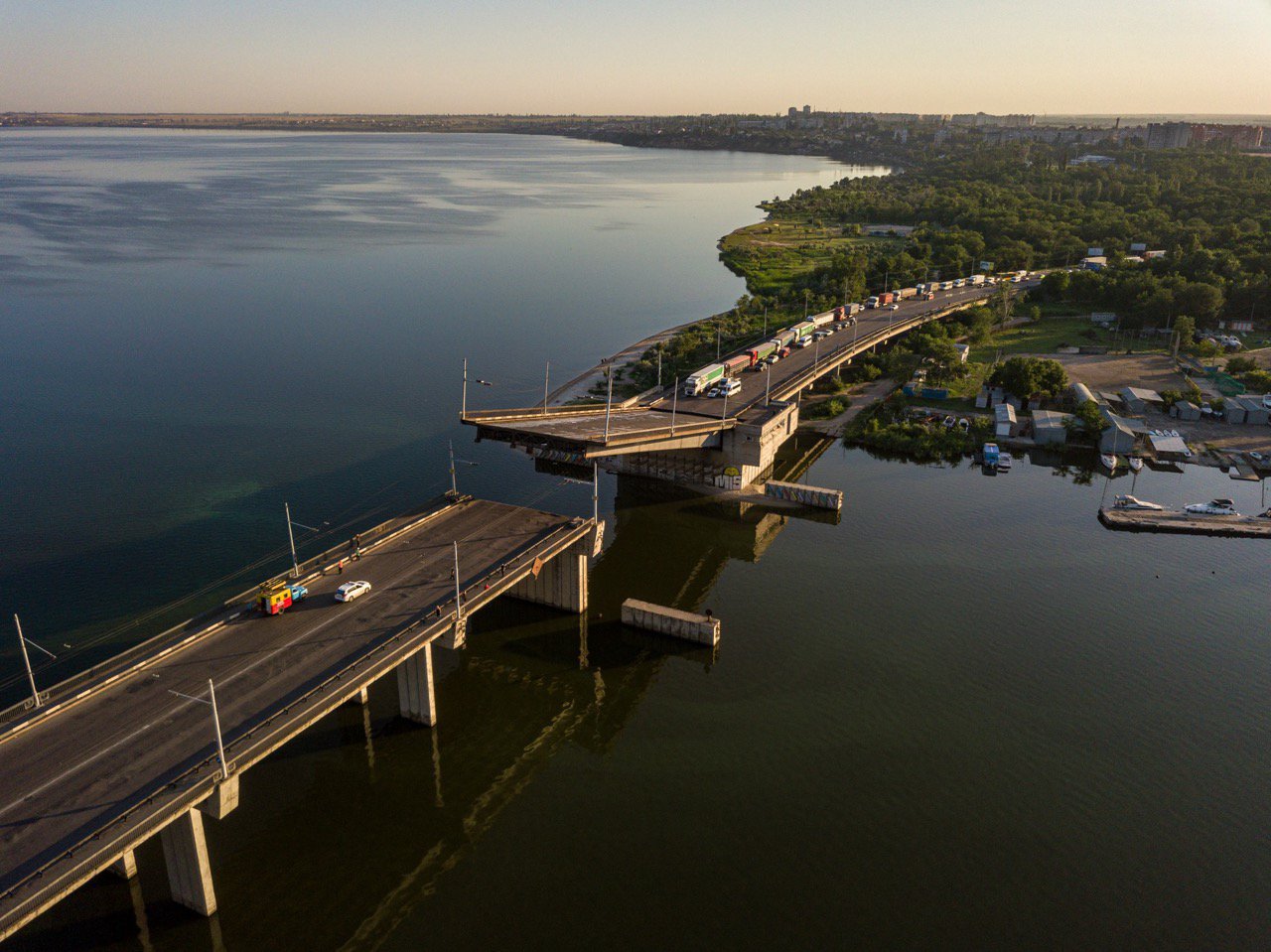
Existing systems can only change organoleptic properties (color, turbidity of water, its smell) and microbiology (remove E. coli, reduce the number of germs). But for other cases, additional purification is required - reverse osmosis, which removes all salts.
"My friends, I don't know when we will get regular, i.e. drinkable water back. I can't say when it will happen. I don't think it will be soon. The local authorities are working together with the Ministry of Regions to solve the problem," said Sienkievych on June 1. "This problem can be solved within two months," Vitaly Kim added in a week. However, even today the local authorities admit that the best possible option (to return to supplying water from the Dnipro) is only possible after the de-occupation of the Kherson region.
" 12-16 wells were dug in April. Perhaps the same number were dug in both May and June. But this number is not commensurate with the needs of Mykolaiv. That is, we will have to dig a huge industrial well at every intersection, which will be very expensive. We will have to dig these wells, put a motor on each one, and to constantly spend electricity on maintenance – which is all economically irrational and will take a very long time until enough wells are dug to fill the water supply system," says Davydenko.
However, even after the deoccupation of the waterworks, it will take at least a month to repair the pipe, because it is huge. Demining will also take some time. Therefore, it is hard to hope for the restoration of the water supply from the Dnipro through the Kherson region in the near future.
How to provide cities with water
The situation in Mykolaiv forced many involved officials, businesses and experts to review the water supply organization in other cities, in particular, their contingency plans (if any) in case of a similar situation. For example, Chernihiv was also in a difficult situation, as its water comes to the city’s pipes from wells, but when the pumping station was damaged by Russian shells, the city was also left without water.
"One of the options is the mandatory presence of drinking and technical water delivery systems, water carriers, reservoirs, reserve wells, generators for their work, developed delivery routes from neighboring regions, distribution points, and notification systems about this in cities. Also, bomb shelters and hospitals will be autonomously provided with water," says Novytskyi.
Local authorities are responsible for this. However, the availability of additional budgets for such projects is a big question. The problem of providing the water canals themselves also remains open: in the east, the number of consumers has decreased, in the west it has increased, but at the same time, operating costs, as well as costs for repairs from damage, are only increasing. Therefore, it is likely that closer to autumn, cities and utility companies will more intensively promote the idea of raising utility tariffs, in particular for water.

